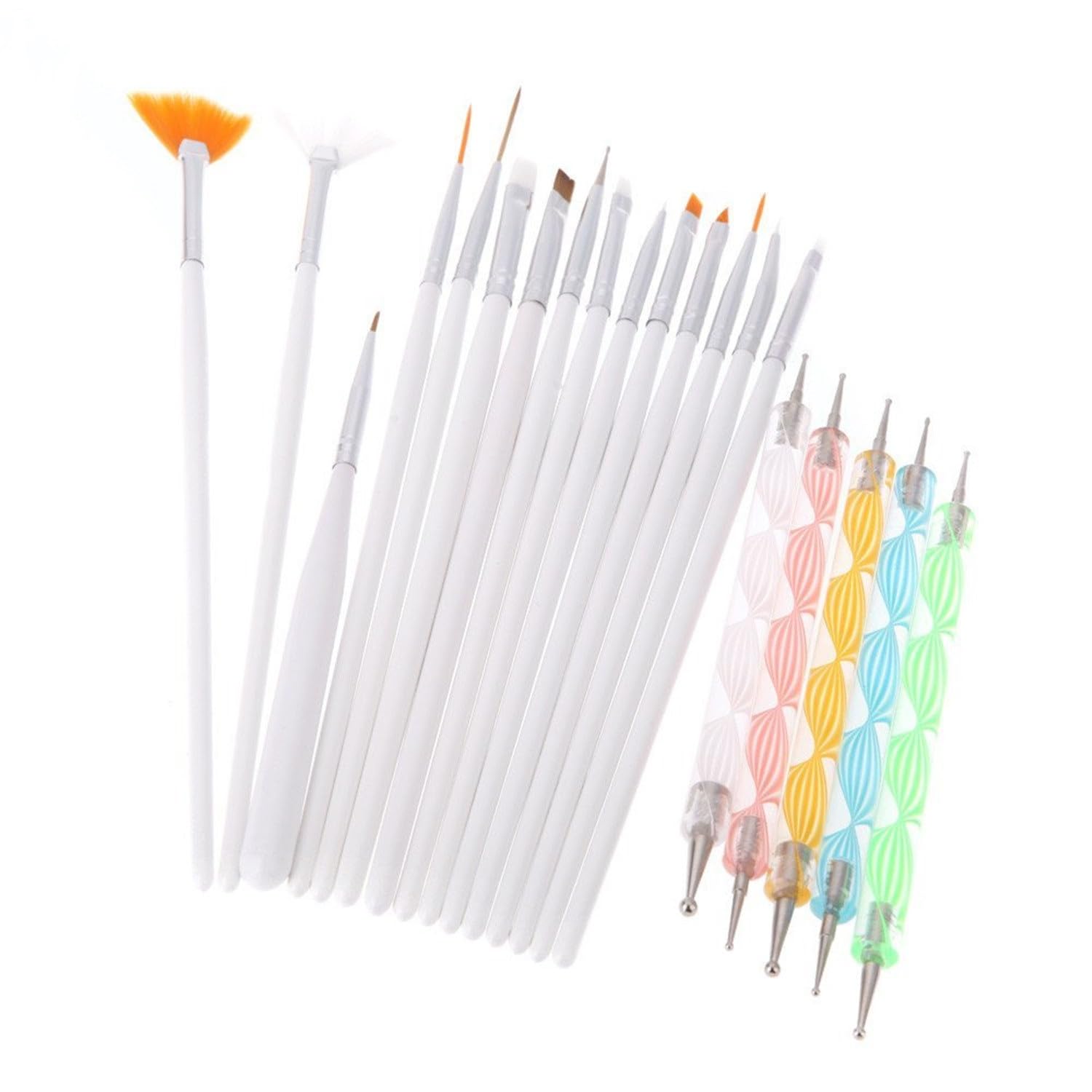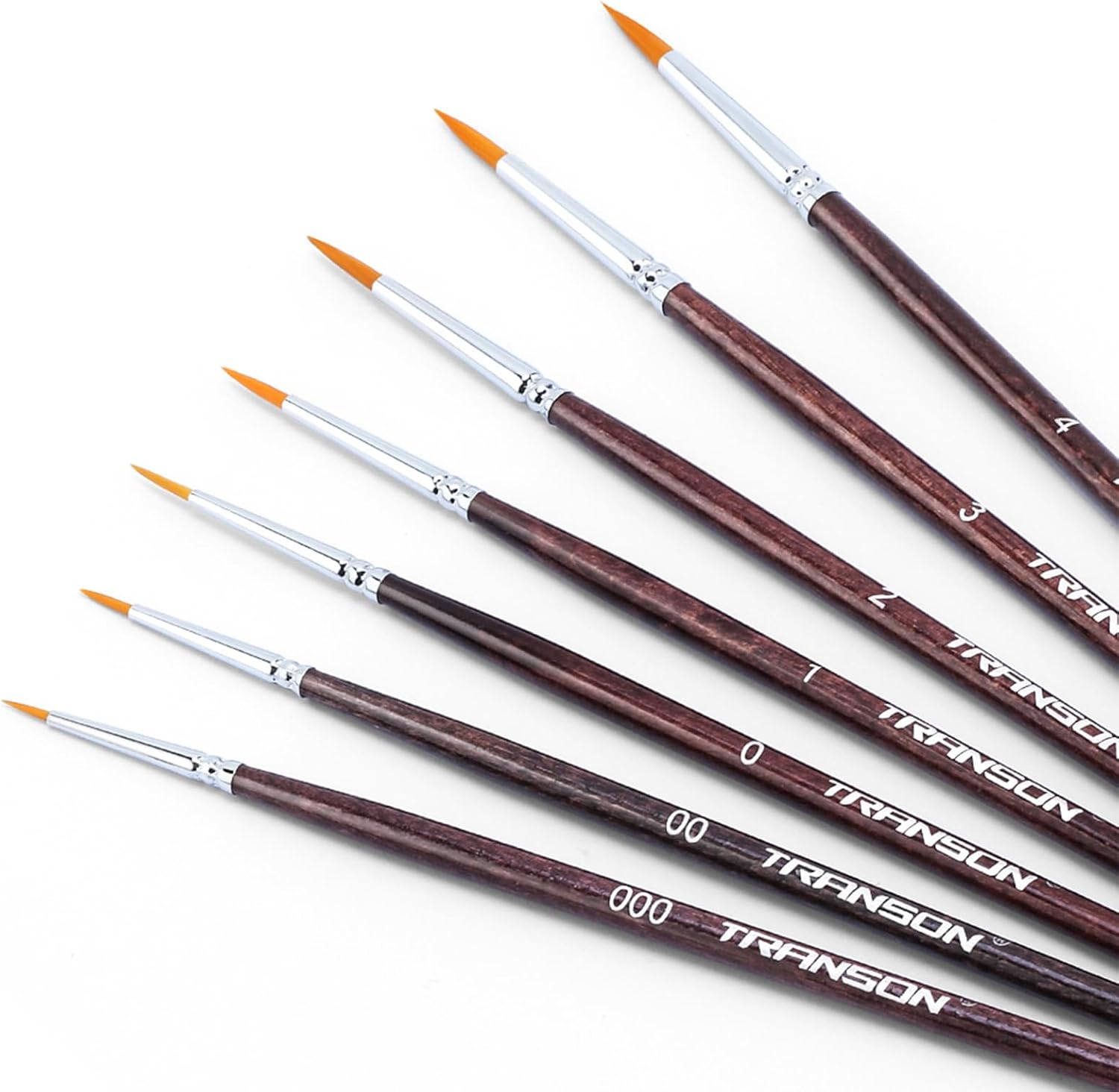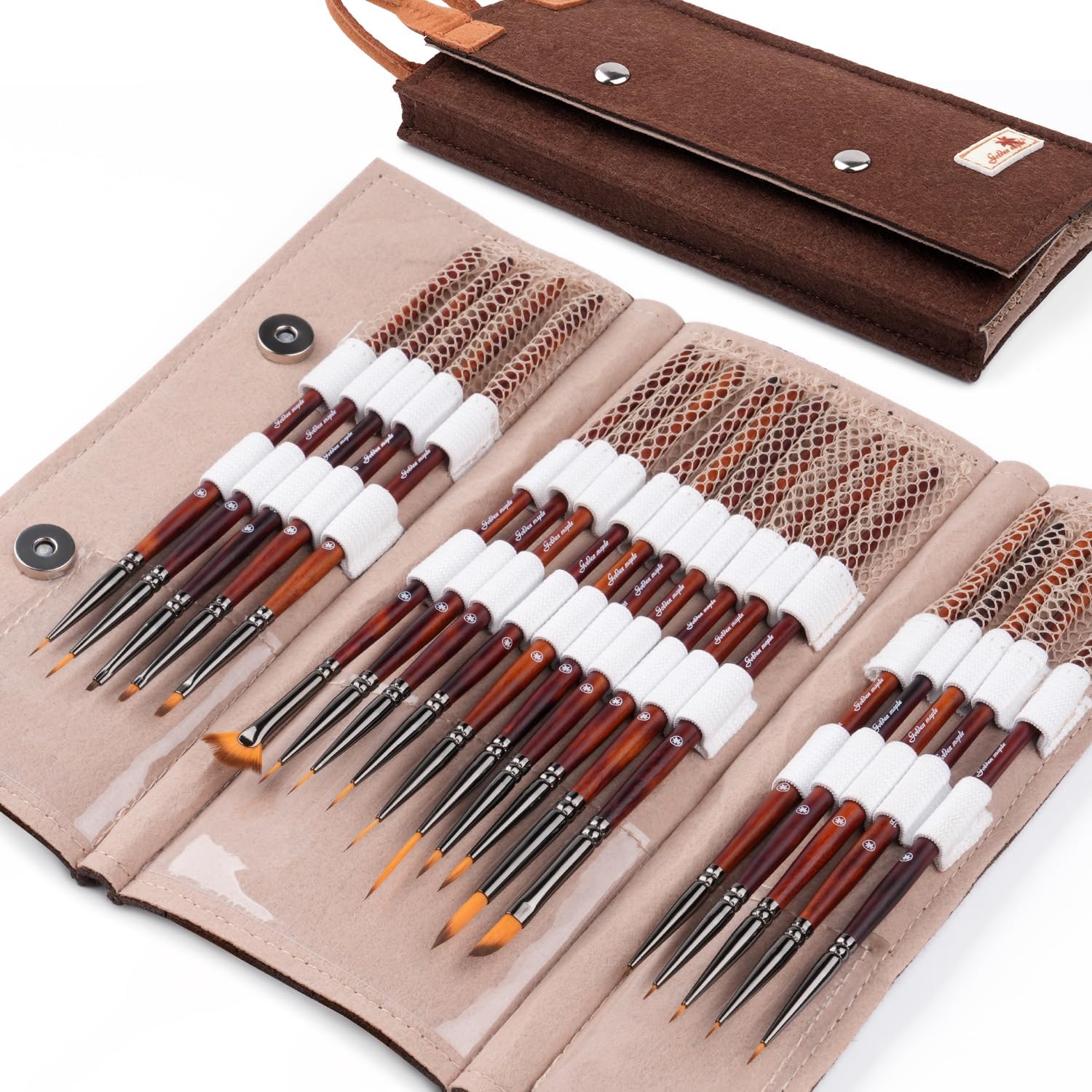Choosing the right paintbrush for enamel paint can make a significant difference in the final result. Have you ever spent hours carefully applying a coat of paint, only to find streaks, brush marks, or uneven surfaces?
It’s frustrating, and often, the cause isn’t the paint itself, but the tool you’re using. When it comes to enamel paints, which are known for their smooth, durable finish, using the right brush is essential for achieving that flawless, professional look.
In this guide, I’ll break down everything you need to know about selecting the best paint brushes for enamel paints.
We’ll discuss the different types of brushes, what to look for in a quality brush, and how to use them effectively to get the smoothest results possible.
Along the way, I’ll share personal insights and tips from my own experience, so by the end, you’ll have all the information you need to make an informed decision and elevate your painting projects.
Why Enamel Paint?
Before we talk about the brushes, it’s important to understand why enamel paint is such a popular choice for certain projects.
Enamel paints are known for their durability, smooth finish, and resistance to weather, making them ideal for both interior and exterior applications.
Whether you’re painting metal, wood, or plastic, enamel provides a glossy and long-lasting coat that holds up well under harsh conditions.
However, for enamel paint to perform at its best, it needs to be applied properly. This is where your choice of brush comes into play.
The wrong brush can leave unsightly brush strokes, uneven coverage, or even compromise the durability of the paint. That’s why selecting the right brush is just as important as choosing the right type of paint.
| Product Image | Product Name | Features | Price |
|---|---|---|---|
 |
YIMART 20PCS | 15 white-handle brushes and 5 dotting pens Brush length: 12.5–17.5 cm (4.9–6.8 inches) Designed for fine lines, shading, detailing, and floral patterns |
Check Price |
 |
Transon Small Detail Paint Brushes | Multi-Medium Compatibility High-Grade Synthetic Bristles Made from solid birch wood with a UV-coated finish Short handle design offers sturdy grip and precision |
Check Price |
 |
GOTIDEAL Paint Brush Set | 10 Assorted Sizes Brush lengths range from 17.1 cm to 19.7 cm (6.7″ to 7.7″) Works on Multiple Surfaces High-Quality Wooden Handles |
Check Price |
 |
Golden Maple Fine Miniature Paint Brushes | Designed for Intricate Work Excellent paint holding capacity Durable and long-lasting performance Easy to Clean & Maintain |
Check Price |
 |
Miniature Paint Brushes | Extreme Detail Brush Variety Premium Synthetic Bristles Rust-Resistant Copper Ferrules Matte-textured triangular grip |
Check Price |
 |
Testor 8707 Economy Pointed Round | Includes 10 pointed round brushes for fine detail and 10 flat round brushes Designed for artists who want to try a variety of colors Lightweight yet strong, easy to grip Works well on paper, canvas, wood, ceramics, and more |
Check Price |
Factors to Consider When Choosing a Paint Brush for Enamel
There are several key factors to keep in mind when selecting a paintbrush for enamel paint. Let’s break them down:
- Bristle Material
The bristle material you choose plays a huge role in how the paint will be applied. For enamel paints, you typically want to look for brushes made from natural or synthetic bristles. Each material has its strengths, so let’s explore both.- Natural Bristles (e.g., China bristle): These bristles are ideal for oil-based enamels, as they hold more paint and offer a smoother finish. They are typically used for high-gloss finishes and are great for professional-level projects.
- Synthetic Bristles (e.g., nylon or polyester): Synthetic brushes are often recommended for water-based enamel paints, but they work just as well for oil-based enamels too. They offer a smooth, even finish and are easier to clean than natural bristle brushes.
- Brush Shape and Size
The shape and size of your brush can affect how easily and accurately you can apply the paint.- Flat Brushes: These are the go-to choice for covering large, flat surfaces. They hold a lot of paint and can cover wide areas quickly.
- Angle Brushes: These brushes are perfect for cutting in around edges, corners, and trim. Their slanted design allows for precise control and smooth lines.
- Round Brushes: Ideal for detailed work or touch-ups, round brushes are great for intricate areas and smaller projects.
Size: Choosing the right size depends on the project. Larger brushes (2–3 inches) are ideal for big surfaces, while smaller brushes (1 inch or less) are perfect for detail work.
- Handle Length
The length of the handle can make a difference in comfort and control, especially for extended painting sessions. Longer handles provide more leverage and control, while shorter handles are better for detail work and precision. - Brush Stiffness
Enamel paints are thick and often require more pressure to apply evenly. Brushes with stiffer bristles work well with these heavy-bodied paints, as they allow for better control and application.
Types of Paint Brushes for Enamel Paint
Now, let’s dive into the most popular types of paintbrushes you can use for enamel paints. Each one is suited for a different application, so knowing when to use each will help ensure a smooth, professional finish.
1. China Bristle Brushes (Natural Bristle)
These brushes are a classic choice for oil-based enamel paints. The natural bristles are soft, yet resilient enough to apply enamel smoothly.
They tend to hold more paint than synthetic brushes, which is useful when working with thick enamels.
The soft bristles also leave fewer brush marks on the surface, making it easier to achieve a glass-like finish.
2. Nylon and Polyester Brushes (Synthetic Bristle)
These brushes are highly durable and work well with both oil and water-based enamel paints. They’re often used for general-purpose painting and provide a smooth finish with minimal brush marks.
Additionally, synthetic bristles are more resistant to wear and tear and are easier to clean than natural bristles. They also tend to hold less paint, but their consistent performance makes them great for most applications.
3. Foam Brushes
Foam brushes are ideal for small projects or for applying thin coats of enamel paint. They don’t leave brush marks and give a smooth finish. However, they are not the best option for thick enamel paints as they can get damaged quickly.
4. Chip Brushes
Chip brushes are inexpensive and simple brushes with natural bristles. They’re often used for quick, rough jobs like applying primers or paints to large areas, and they can work for enamel paints too.
While not ideal for precision work, chip brushes are handy for applications that don’t require fine detail.
Step-by-Step Guide: How to Use Your Paint Brush for Enamel Paint
To achieve the best results with enamel paint, it’s important to follow a few key steps when using your brush. Here’s a step-by-step guide to help you out:
Step 1: Prepare the Surface
Before you even think about opening the can of enamel paint, make sure your surface is clean and smooth. Sanding the area and removing any dust or debris will help the paint adhere better.
Step 2: Load Your Brush Properly
Dip your brush into the enamel paint, but don’t overload it. You want to get enough paint to cover the surface but not too much that it drips. Tap the brush against the side of the can to remove excess paint.
Step 3: Apply in Thin, Even Coats
Start applying the paint in thin, even strokes. For a smooth finish, avoid applying too much pressure on the brush. Let the paint flow smoothly from the brush and spread it evenly on the surface.
Step 4: Don’t Overwork the Paint
Enamel paints can dry quickly, so it’s important not to go over the same spot too many times. If you’re not happy with the result, let the paint dry and sand it down before applying another coat.
Step 5: Clean the Brush Immediately
After you’re done painting, clean your brush immediately with the appropriate solvent (mineral spirits for oil-based enamel, water for water-based enamel). This will help maintain the brush’s condition for future use.
Common Mistakes to Avoid When Using Enamel Paint Brushes
Even experienced painters can make mistakes when using enamel paints. Here are a few common mistakes I’ve seen and that I’ve personally made that you’ll want to avoid:
- Using the Wrong Type of Brush
Using a natural bristle brush with a water-based enamel or a synthetic brush with oil-based enamel can cause issues with paint adhesion and finish. Make sure your brush is suitable for the type of enamel you’re using. - Overloading the Brush
When you dip your brush into the paint, avoid loading it with too much. This leads to drips and streaks, ruining the smooth finish you’re aiming for. - Not Preparing the Surface Properly
Failing to clean or sand the surface before painting can result in poor paint adhesion. Always prep your surfaces before applying enamel. - Painting in Direct Sunlight
While enamel paints are durable, they can dry too quickly in direct sunlight, leading to brush marks and uneven coverage. Always paint in the shade or a well-ventilated area.
Table: Comparison of Enamel Paint Brushes
| Brush Type | Best For | Pros |
| China Bristle (Natural) | Oil-based enamel paints | Holds more paint, smooth finish, soft bristles |
| Nylon & Polyester (Synthetic) | Both oil and water-based enamel | Durable, easy to clean, consistent performance |
| Foam Brushes | Small projects, thin coats | Smooth finish, no brush marks |
| Chip Brushes | Rough, quick jobs | Affordable, good for large areas |
Conclusion
Choosing the right brush for enamel paint is crucial to achieving a smooth, flawless finish. The bristle material, brush shape, and size all play an essential role in how well the paint will be applied.
Whether you choose a natural bristle brush for oil-based enamel or a synthetic brush for water-based enamel, the right tool will make your painting project much easier and the result far more professional.
Now that you have the knowledge, take it and apply it to your next project. Remember to take your time, follow the steps, and avoid the common mistakes we’ve discussed.
If you have any more questions or need further guidance, feel free to leave a comment below. Happy painting!
FAQs
1. Can I use a foam brush for enamel paints?
Yes, foam brushes can be used for small projects with thin coats of enamel paint. They help achieve a smooth finish without brush marks, but they may not be suitable for thicker enamel paints.
2. What’s the difference between natural and synthetic bristles for enamel?
Natural bristles, like China bristle, are ideal for oil-based enamel paints and provide a smoother finish. Synthetic bristles work for both oil and water-based enamels and are easier to clean and more durable.
3. How do I avoid brush marks when using enamel paint?
To avoid brush marks, apply the enamel in thin, even coats and avoid overloading the brush. Let each coat dry completely before applying the next.
4. Can I clean my brushes after using enamel paint?
Yes! Clean your brushes immediately after use with the appropriate solvent (mineral spirits for oil-based enamel, water for water-based enamel). Proper cleaning will help prolong the life of your brush.
5. What size brush should I use for large surfaces?
For large surfaces, a 2–3 inch flat brush works best. It allows you to cover more area with fewer strokes, leading to a smoother finish.



